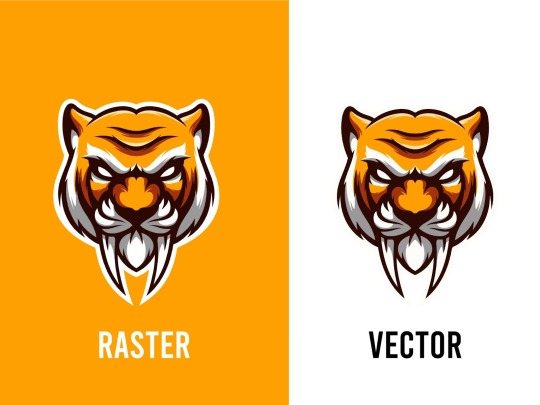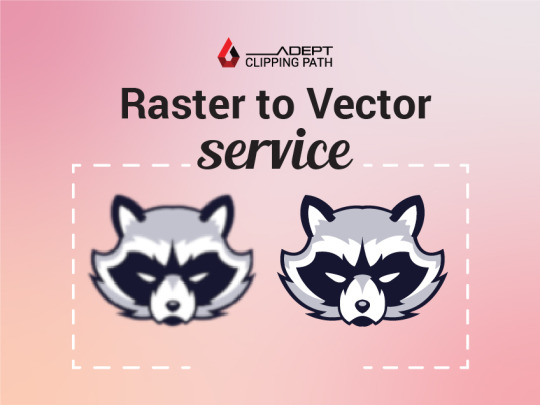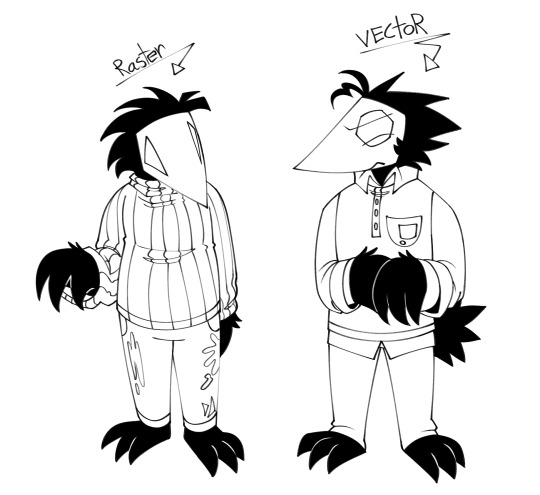#raster to vector
Text



Cut Out Center (COC) designers use neck joint/Ghost mannequin service to remove the doll from the images and combine them to show the garments in their proper sizes and shapes.
Daily 3000 E-Commerce Image Editing Capacity. Dedicated Secure FTP Account. Urgent Delivery Service (1 Hour, 3 Hours, 6 Hours)High-Quality Service Up To 60% Discount 50-100 IMAGES ORDER 10 IMAGES FREE Facility And Many More.
Our company's Graphics Design Experts are the best in this market.
Free-Trial Link: https://lnkd.in/gYJkXjh9
W: https://cutoutcenter.com/
#clipping path#shadow creation#color correction#background remove#raster to vector#resize#photo retouching#shoe retouch#background change#recolor#neckjoint#photoretouching#backgroundremoval#clippingpath#photo manipulation#gust mannequin
2 notes
·
View notes
Text
Effortless Raster to Vector Transformation: A Comprehensive Guide
Raster to vector conversion is a transformative process in graphic design, revolutionizing the way images are created and manipulated. Converting raster images, composed of pixels, into vector graphics built on mathematical equations offers scalability and versatility. However, the conversion process often poses challenges. This comprehensive guide unveils the secrets of effortlessly transforming raster to vector, offering a step-by-step approach for impeccable results.

Understanding Raster and Vector Graphics
Raster graphics are composed of pixels, forming a grid where each pixel carries colour information. Common formats include JPEG, PNG, and GIF. Enlarging them can lead to a loss of quality due to pixelation.
Vector graphics, on the other hand, are based on mathematical equations, using points, lines, and curves to create shapes and patterns. They're scalable without losing quality, ideal for logos and illustrations. Formats like SVG store vector graphics, allowing easy scaling without compromising quality.
In essence, raster graphics excel in complex images like photographs, while vectors are better for clean, scalable designs. Understanding their differences helps in choosing the right format for specific needs, whether it's web design, printing, or digital art.
Choosing the Right Software
Assess Specific Needs: Identify your organisation's unique requirements and functionalities. Consider factors like scalability, user-friendliness, and compatibility with existing systems.
Research and Compare: Explore available options thoroughly, comparing features, customer reviews, and pricing models. Look for software that aligns closely with your needs and offers flexibility for future growth.
Vendor Reputation and Support: Investigate the vendor's reputation for reliability, customer service, and ongoing support. Ensure they offer regular updates, maintenance, and responsive assistance.
Scalability and Integration: Choose software that can scale alongside your business and seamlessly integrate with other tools or systems you currently use to avoid compatibility issues.
Cost vs. Value: Consider the total cost of ownership, including licensing, implementation, training, and potential future expenses. Balance this against the value and ROI the software promises to deliver.
Preparation: Cleaning Raster Images
Assess Image Quality: Begin by evaluating the raster image for imperfections, blurriness, or artifacts that may impact its clarity.
Backup Original: Prior to cleaning, make a duplicate or backup of the original raster image to avoid accidental loss or damage.
Use Image Editing Software: Utilize specialized software like Adobe Photoshop or GIMP to perform cleaning tasks such as spot healing, clone stamping, or noise reduction.
Address Specific Issues: Focus on specific areas needing improvement, like removing dust spots, correcting color balance, or enhancing details without compromising the original quality.
Save in Appropriate Format: Once cleaning is completed, save the cleaned raster image in a suitable format (JPEG, PNG, TIFF) to maintain quality and usability for future purposes.
Conversion Techniques
Compelling Call-to-Action (CTA): Craft persuasive CTAs that encourage immediate action, using clear and enticing language to prompt conversions.
A/B Testing: Implement systematic testing of various elements (such as headlines, colors, or layouts) to analyze and optimize the most effective combination for driving conversions.
Simplified Forms: Streamline and simplify conversion forms by reducing unnecessary fields, making the process effortless for users, thereby increasing completion rates.
Persuasive Copywriting: Employ persuasive and concise copy that addresses customer pain points, highlights benefits, and fosters a sense of urgency to encourage conversions.
Visual Content Optimization: Utilize high-quality images, videos, and infographics strategically placed to visually guide users towards conversion points, enhancing engagement and conversion rates.
Manual Tracing: Precision at Your Fingertips
Manual tracing is the meticulous art of precision, placing control directly in your hands to craft with finesse and accuracy. Its essence lies in the intimate connection between creator and creation, where every stroke and curve is a deliberate choice, a testament to expertise and dedication. Like a conductor leading an orchestra, manual tracing empowers you to navigate complexities, capturing intricate details with finesse and grace. It's the embodiment of craftsmanship, offering a tactile experience that transcends digital boundaries. With each deliberate movement, it grants you unparalleled control, transforming a blank canvas into a masterpiece. Manual tracing is the symphony of precision at your fingertips, where creativity harmonises with meticulousness to produce exceptional, finely crafted results.
Automated Tracing: Streamlining the Process
Efficiency Boost: Automated tracing expedites workflows by eliminating manual steps, reducing human error, and enhancing overall efficiency.
Accuracy Improvement: Advanced algorithms ensure precise tracing, minimizing inaccuracies often associated with manual processes and ensuring reliable results.
Time-Saving Solution: Automation significantly reduces the time required for tracing tasks, allowing for quicker turnaround times and faster decision-making.
Scalability Advantage: Automated tracing systems can easily scale to handle larger volumes of data or complex tracing requirements without compromising quality or speed.
Enhanced Analysis Capabilities: By automating tracing, organizations gain the ability to conduct in-depth analyses, uncover patterns, and derive valuable insights from traced data, driving informed decision-making and strategic planning.
Refinement and Optimization
Refinement and Optimization encapsulate the iterative process of improving, enhancing, and perfecting systems, processes, or ideas. Refinement involves fine-tuning existing elements, eliminating inefficiencies, and enhancing functionality. It's about scrutinising details, seeking better solutions, and polishing existing structures to achieve higher standards. Optimization focuses on maximising efficiency, effectiveness, and performance. It involves streamlining processes, leveraging resources effectively, and achieving the best possible outcomes. Both concepts synergistically drive progress by continuously evaluating, adjusting, and enhancing to meet evolving needs and standards. This cyclic pursuit of perfection fosters innovation, fosters growth, and ensures sustained excellence in various domains from technology and business strategies to personal development.
Saving and Exporting
File Formats: Choose appropriate file formats for exporting, ensuring compatibility and quality preservation. Consider formats like PDF for documents, JPEG/PNG for images, and MP4 for videos.
Regular Backups: Implement a routine backup schedule to safeguard your data. Use cloud storage, external drives, or dedicated backup software to secure information in case of system failures or data loss.
Version Control: Maintain multiple versions of your work. Versioning helps track changes, revert to previous iterations, and avoid accidental loss of crucial information.
Optimized Settings: When exporting, adjust settings for file size, resolution, and quality. Opt for compression or resolution adjustments to balance size and quality, especially for large files.
Metadata and Organization: Embed relevant metadata and organize files systematically. Proper labeling, tagging, and folder structures streamline retrieval and maintain clarity across exports.
Conclusion
Effortless raster to vector transformation is a skill that combines technical prowess with artistic finesse. Understanding the nuances between raster and vector graphics, selecting suitable software, meticulous preparation, choosing the right conversion method, and refining the output are pivotal steps in achieving impeccable results. Embrace the versatility and scalability of vector graphics, transcending the limitations of raster images, to unlock endless creative possibilities in graphic design. With practice and perseverance, mastering raster to vector conversion becomes a gateway to unparalleled design precision and flexibility.
0 notes
Text
youtube
#bluelightningtv#photoshop#adobephotoshop#martygeller#bltv#photoeffect#photography#graphicdesign#photo#vector#raster to vector#Youtube
1 note
·
View note
Text

Creativity penetrates the ordinary to uncover the extraordinary!
And our graphic artists and designers at Cre8iveSkill are always keen to deliver brilliance to your creative artworks with our top-notch vector conversion services, utilizing the latest and most powerful software and tools. When you place a bulk order with us, we make sure that we offer you high-quality vectorized designs that are ideal for a wide range of applications.
We Are Specialists In:
Raster To Vector Conversion
Vector Logo Design
Vector Tracing
Ecommerce Photo Editing
Image Retouching
Photo Manipulation
Background Removing
Graphic Mockup On The Product
Drop Shadow
Click the link below right now to place your vector art conversion order:
#Cre8iveSkill#vector art conversion#vector services#vector conversion#convert png to vector#vector conversion service for bulk orders#vector services for bulk orders#convert image into vector#convert png into vector#printing#jpg to vector#sublimation#png to vector#psd to vector#raster to vector#vector graphic#vectorization#laseremgraving#screen printing#vector art conversion services#vector conversion services
0 notes
Text
10 Graphic Design Trends to Watch Out for in 2023
Introduction: Graphic design trends constantly evolve with new styles and techniques every year. Keeping up with these trends is important to stay relevant and produce designs that resonate with audiences. In 2023, we expect to see some exciting new graphic design trends shaping the industry. This blog post will look at ten graphic design trends to watch out for in 2023.
3D Design: With technological advancements, 3D design is becoming more accessible and popular. Three-dimensional graphics and animations can add depth and dimension to designs, creating a more immersive experience for viewers.
Bold Typography: Typography is always an important aspect of graphic design, but in 2023 we can expect to see even bolder and more creative typography. This trend involves using bold, eye-catching fonts and typography styles to make a statement and capture attention.
Abstract Art: Abstract art has been a popular trend in recent years and will continue to be a popular trend in 2023. This style uses geometric shapes, patterns, and colors to create unique and visually striking designs.
Dark Mode: Dark mode is a user interface trend that has gained popularity in recent years and will continue to be popular in 2023. This mode uses a dark color scheme for user interfaces, which is easier on the eyes and can create a sleek and modern look.
Minimalism: Minimalism is a timeless trend that will continue to be popular in 2023. This style uses simple, clean designs with minimal color and other design elements.
Isometric Design: Isometric design involves using three-dimensional shapes and lines to create the illusion of depth and perspective. This trend will continue to be popular in 2023, adding a modern and futuristic look to designs.
Vintage and Retro: Vintage and retro designs have been popular for several years, and this trend will continue in 2023. This style uses design elements from past eras, such as vintage fonts, colors, and imagery, to create a nostalgic and unique look.
Gradients: Gradients have been a popular trend in recent years and will continue to be popular in 2023. This trend involves using color gradients to create depth and dimension in designs, and it can be used in various design styles.
Hand-Drawn Illustrations: Hand-drawn illustrations add a personal and unique touch to designs and will continue to be a popular trend in 2023. This style involves using hand-drawn illustrations to create a whimsical and creative look.
Mixed Media: Mixed media combines design elements, such as photography, illustrations, and typography, to create a visually dynamic and unique design. This trend will continue to be popular in 2023, allowing endless possibilities and creative expression.
Conclusion: In 2023, we expect many exciting graphic design trends. There will be something for everyone, from 3D design and bold typography to vintage and retro styles. Keeping up with these trends is important to stay relevant and produce designs that resonate with audiences. By incorporating these trends into your designs, you can create visually striking and memorable graphics that stand out in a crowded digital world.

1 note
·
View note
Photo

"Get the best Vector Output for your Raster Images with our Raster to Vector Service!"
Have you got images you would like to use on your website, but since it's a Raster, the image gets blurry when you try to resize it?!
Do you want a high-quality output of your image that you can enlarge without loss in quality?!
Want to print your company's logo on a large printable banner or remodel an existing design?!
Our Raster to Vector Service covers everything from turning your product images to vectors to modifying and updating your existing design!
Click on this link now!
https://www.adeptclippingpath.com/raster-to-vector-service
0 notes
Text


My Name is shuvo. I am Graphics Designer. I do the work upwork and Fiver. My working tools is adobe photoshop and Adobe illustrations. Thanks Every Friends
1 note
·
View note
Text

Contact us for the best quality e-Shop Photo Editing Services: [email protected]
#shadowmaking
#reflectionshadow
#clippingpathservice
#backgroundremoveservice
#Shadowmaking
#imageretouching
#imagemaskingservice
#Colorcorrection
#imagemanipulation
#eshopphotoediting#shadowmaking#reflectionshadow#clippingpathservice#backgroundremoveservice#Shadowmaking#imageretouching#imagemaskingservice#Colorcorrection#imagemanipulation#rastertovector#commercialphoto#colorcorrection#designer#raster to vector
0 notes
Text
every so often i get an idea and then obsessively work on it for hours and hours and sometimes it turns out good.
anyway the other day @follivora made a post with joker out as mucha art and that sparked this:

#joker out#jan peteh#songbird arts#i might do the rest of them too but my hands are tired and i have some other projects to do first#i have a nice reference pic of nace saved#i am SO proud of this i was using a vector tutorial for the style and working in raster graphics and still managed#definitely could have been more efficient but i was learning and learning is important
107 notes
·
View notes
Text

Best Resize Photo Editing Service || Cut Out Center || Asia Best Photo Editing Company
We Have In-House 500+ Expert image editors and Graphics Designers. Each Client Wise Personal Dedicated 24/7 Support. Daily 3000
E-Commerce Image Editing Capacity. Dedicated Secure FTP Account.
Our image editing services :
➱Background Removal
➱Clipping Path
➱Image Retouching
➱Ghost Mannequin
➱Color Correction
➱Ecommerce Photo Editing
➱Shadow Creation
➱Image Masking
➱Image Manipulation
#clipping path#shadow creation#color correction#background remove#raster to vector#resize#photo retouching#shoe retouch#background change#recolor
2 notes
·
View notes
Text






a bunch of caroline uhhh. emotes kinda thing i whipped up for fun a few months ago and then just never posted
since caroline house came out may as well post!
[Image ID: Six images showing Caroline's (from Dev Palmer's re:curse) head in various expressions, styled like discord emojis - a yellow jester with twin tailed head ending in white pompoms.
Expressions from left to right: default smile, fisheye perspective, head tilted with two question marks in a pixel font, giggling, thinking, pointing up with eyes closed.
End ID]
#re:curse#caroline re:curse#i intended to make them look like vectors but these are just raster made in csp because i was a coward /j#tje fisheye is still fucking killing me#doodle post
65 notes
·
View notes
Text
Demystifying Raster to Vector: Techniques for Seamless Conversion
In the realm of digital graphics and design, the conversion from raster to vector is a crucial process that allows for scalability, precision, and versatility. Raster images, made up of pixels, are great for detailed and nuanced visual representations. However, they lack scalability and can become pixelated when enlarged. On the other hand, vector graphics, constructed using mathematical formulas, offer scalability without loss of quality, making them ideal for logos, illustrations, and designs that require resizing without compromising clarity.

The conversion from raster to vector involves transforming pixel-based images into scalable vector graphics. Achieving a seamless conversion requires employing various techniques and tools while understanding the nuances of both raster and vector formats. Let's delve into some techniques that facilitate this conversion process:
Manual Tracing or Pen Tool Technique:
One of the most precise methods involves manually tracing raster images using the Pen Tool available in vector-based software like Adobe Illustrator. This technique involves outlining shapes, curves, and lines to recreate the image as a vector graphic. It demands a steady hand and a keen eye for detail but offers complete control over the final output's accuracy and quality.
Automated Conversion Tools:
Efficiency Boost: Automated conversion tools streamline complex processes, saving time and resources by swiftly transforming data or files between formats, eliminating manual intervention.
Accuracy Enhancement: These tools minimize human errors by employing algorithms designed for precision, ensuring consistency and correctness in the converted output.
Versatility: They offer multi-format support, accommodating various file types, such as documents, images, videos, and more, enhancing flexibility for diverse needs.
Scalability: With the ability to handle large volumes of data or numerous files simultaneously, these tools are scalable to meet growing conversion demands efficiently.
User-Friendly Interface: Many automated conversion tools come with intuitive interfaces, making them accessible and easy to use for individuals with varying technical expertise, promoting widespread adoption and usability.
Bezier Curves and Anchor Points:
Understanding the principles of Bezier curves and anchor points is essential for accurate vectorization. Bezier curves control the shape and path of lines in vector graphics, while anchor points serve as control handles to manipulate these curves. Mastery over these elements allows designers to recreate intricate details and smooth curves when converting raster images to vectors.
Layering Techniques and Refinement:
Hierarchy Establishment: Begin with a broad outline, setting the foundational structure of your work. This initial layer identifies key themes, main ideas, and their interrelationships, establishing a framework for further development.
Progressive Detailing: Gradually add depth and specificity to each layer, refining the content by incorporating supporting evidence, examples, or relevant data. This step-by-step approach enhances clarity and enriches the substance of your work.
Iterative Review: Continuously reassess and refine each layer. This iterative process allows for adjustments, ensuring coherence and alignment between different layers while maintaining the overall integrity of the content.
Clear Articulation: Focus on articulating each layer with precision and coherence. Each segment should seamlessly connect with the preceding and succeeding layers, creating a cohesive narrative or argument.
Final Synthesis: Integrate all refined layers into a cohesive whole, ensuring a harmonious flow and comprehensive understanding. This final synthesis showcases a polished and sophisticated outcome through meticulous layering and refinement.
Adjusting Thresholds and Settings:
Adjusting Thresholds and Settings,entails fine-tuning parameters to optimize performance or outcomes in various systems. This process involves strategic modifications to predefined values or configurations, aiming to enhance efficiency, accuracy, or desired behaviors. Whether in machine learning models, security protocols, or organizational processes, adjusting thresholds and settings allows customization to specific requirements, fostering adaptability and responsiveness. It empowers users to calibrate sensitivities, limits, or triggers, thereby refining decision-making and system responses. By carefully assessing and altering these parameters, organizations can better align with changing environments, mitigate risks, and improve overall functionality. This practice underscores the significance of continual evaluation and adjustment to achieve optimal results within dynamic frameworks.
Combining Manual and Automated Techniques:
Synergistic Approach: Employing both manual and automated techniques in tandem allows for a synergistic blend of human expertise and machine efficiency. Manual methods leverage human judgment, adaptability, and nuanced understanding, while automation streamlines repetitive tasks and enhances speed.
Enhanced Accuracy: By combining manual oversight with automated processes, errors can be significantly reduced. Human intervention ensures context-driven decision-making and intricate problem-solving abilities, while automation maintains consistency and minimizes human errors associated with repetitive tasks.
Optimal Resource Utilization: Integrating manual and automated techniques optimizes resource allocation. Human workers can focus on complex, high-value tasks that necessitate creativity and critical thinking, while automation handles routine, time-consuming operations, enhancing overall productivity.
Comprehensive Risk Management: The combined approach enables a comprehensive risk management strategy. Human oversight can identify nuanced risks and exceptions that automated systems might overlook, while automation provides scalability and speed in analyzing vast datasets for potential threats.
Continuous Improvement: The collaboration between manual and automated techniques fosters a culture of continuous improvement. Human insights drive refinements in automated processes, while automation collects data that informs human decision-making, creating a cycle of optimization and advancement.
Regular Quality Checks and Iterative Refinement:
Regular Quality Checks and Iterative Refinement are indispensable facets of any successful process or project. Implementing consistent quality checks ensures that the output meets predefined standards and aligns with objectives. These checks serve as checkpoints to identify potential issues, allowing for timely corrections and improvements. Moreover, iterative refinement fosters continuous enhancement by incorporating feedback and making incremental adjustments. This iterative approach not only enhances the overall quality but also ensures that the end product or process evolves to meet changing requirements or expectations. By integrating these practices, organizations can maintain a high standard of excellence, adapt to dynamic environments, and ultimately deliver superior outcomes that resonate with stakeholders and customers alike.
Understanding File Formats and Output Options:
File Format Importance: Comprehend the significance of file formats; grasp how they impact data storage, quality, and compatibility across platforms and software.
Format Versatility: Understand diverse file formats (e.g., JPEG, MP4, PDF) and their suitability for different types of content (images, videos, documents) to optimize output quality and file size.
Output Options: Explore various output settings and their effects on final file quality, size, and compatibility, allowing tailored adjustments for specific needs.
Interoperability and Accessibility: Learn about formats that ensure easy sharing and accessibility across devices and applications, promoting seamless data exchange.
Conversion Techniques: Gain insights into file conversion methods between formats, enabling efficient adaptation of content for different purposes while preserving its integrity and quality.
Conclusion
The conversion from raster to vector is a nuanced process requiring a blend of technical expertise, artistic sensibility, and familiarity with the tools at hand. By combining manual techniques with automated tools, understanding vector principles, and emphasizing iterative refinement, designers can seamlessly convert raster images into high-quality, scalable vector graphics. Mastering these techniques empowers designers to unleash the full potential of their visual creations, ensuring versatility, clarity, and adaptability across various mediums and platforms.
0 notes
Text

my babys btw
#.bmp#masterpieces#she for both right now#i cant decide what colors they should be... i think young darkners of their type don't choose a 'personal color' until theyre much older#so they change it a lot#they as a type just have bald faces. they just look like that#some birds just look like theyre balding all the time and its fine#raster always has paint-stained clothes no matter how hard anyone tries#vector is much neater naturally#might change vectors eye to just round.. hm.. i want them to have rounder shapes because of how vector graphics work#theyre both the same age!#raster is several minutes older#actually i think im gonna change several thing about vector.. .hm..
8 notes
·
View notes
Text

Premium Quality Vector Art Conversion Service
Precision is our trademark as you can see through our recently vectorized mech-owl design!
Over the years, our graphics professionals at Cre8iveSkill have mastered the art of converting any image to vector designs with utmost perfection. Whether you are looking for vector art conversion services for promotional campaign purposes, screen printing, or marketing, we have a diverse team of vector graphic professionals who process your orders as per the specifications of your requirements. Furthermore, we make sure that we offer our services within the stipulated timeframe and minimum budget.
If you'd like to experience the level of competence we have in vector conversion services, click the link below to consult with our experts about the vector conversion services we provide.
#cre8iveskill#vector art conversion#vector services#vector conversion#convert png to vector#vector conversion service for bulk orders#vector services for bulk orders#convert image into vector#jpg to vector#png to vector#psd to vector#raster to vector#vector graphic#vectorization#vector art conversion services#raster to vector conversion#vector conversion service usa#vector conversion usa
0 notes
Text
What is Vectorization Services In artwork
Vectorization services in artwork refer to the process of converting a raster image, such as a JPEG or PNG, into a vector image, which is made up of mathematical equations rather than pixels. Vector images are more versatile and can be easily resized without losing quality. This process is often used for creating digital logos, illustrations, and other graphics that need to be used in various sizes and contexts. Vectorization services are typically provided by graphic designers or specialized companies that use software such as Adobe Illustrator to convert raster images into vector formats.

#vector#raster to vector#vectorization#adobe illustrator#vectorillustration#vectorart#adobe photoshop#illustrationartists
0 notes
